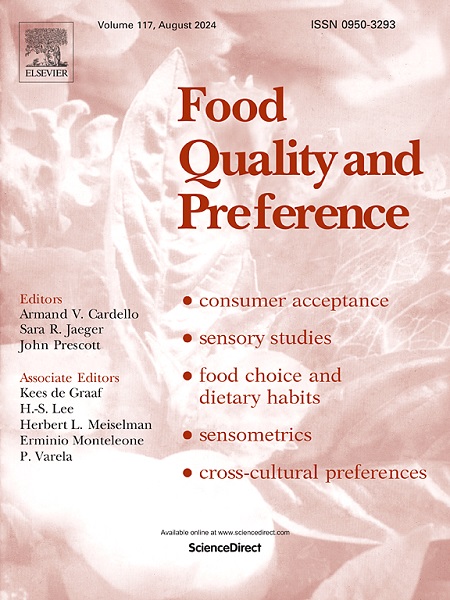Impact of new octagonal front-of-pack labeling on purchasing probability of processed and ultra-processed foods in Colombia
IF 4.9
1区 农林科学
Q1 FOOD SCIENCE & TECHNOLOGY
引用次数: 0
Abstract
Front-of-pack labeling (FOPL) has emerged as a key public health tool to inform consumers about the nutritional quality of foods and encourage healthier purchasing decisions. Among the various FOPL systems implemented worldwide, warning labels have gained prominence in Latin America due to their effectiveness in discouraging the consumption of unhealthy products. This study evaluates the impact of black octagonal front-of-pack warning labels (FOPL), introduced by Resolution 254 of 2023 in Colombia, on consumer purchasing intentions for processed and ultra-processed foods. Through an online experimental survey involving 490 food shoppers, 22 commercially available products were evaluated with and without the new labeling. The research examines the relationship between the number of warning labels and purchase probability, as well as the role of individual factors. The findings demonstrate a significant reduction in purchase probability for 20 of the 22 evaluated foods, with an additive effect of the number of labels. Products with four labels showed the largest impact (Cohen's d = 0.34), while those with a single label exhibited minimal changes (Cohen's d = 0.17). Greater label sensitivity was observed among participants with higher education levels and greater familiarity with nutritional labeling. Additionally, a marginally significant inverse relationship was found between product price and the change in purchase probability. These findings offer early evidence on the effectiveness of the Colombian FOPL policy under ecologically valid conditions, and highlight the importance of complementary strategies to enhance its impact across different consumer segments.
新的八角形包装正面标签对哥伦比亚加工和超加工食品购买概率的影响
包装正面标签(FOPL)已成为一个重要的公共卫生工具,告知消费者有关食品的营养质量和鼓励更健康的购买决策。在世界各地实施的各种FOPL系统中,警告标签在拉丁美洲获得了突出地位,因为它们有效地阻止了不健康产品的消费。本研究评估了哥伦比亚2023年第254号决议引入的黑色八角形包装前警告标签(FOPL)对消费者购买加工和超加工食品意向的影响。通过一项涉及490名食品购物者的在线实验调查,对22种市售产品进行了有和没有新标签的评估。研究考察了警告标签数量与购买概率之间的关系,以及个体因素的作用。研究结果表明,由于标签数量的叠加效应,22种被评估食品中有20种的购买可能性显著降低。有四个标签的产品显示出最大的影响(科恩的d = 0.34),而只有一个标签的产品显示出最小的变化(科恩的d = 0.17)。在受教育程度越高、对营养标签越熟悉的参与者中,标签敏感度越高。此外,产品价格与购买概率的变化呈微显著的负相关。这些发现为哥伦比亚FOPL政策在生态有效条件下的有效性提供了早期证据,并强调了互补战略对增强其在不同消费者群体中的影响的重要性。
本文章由计算机程序翻译,如有差异,请以英文原文为准。
求助全文
约1分钟内获得全文
求助全文
来源期刊

Food Quality and Preference
工程技术-食品科技
CiteScore
10.40
自引率
15.10%
发文量
263
审稿时长
38 days
期刊介绍:
Food Quality and Preference is a journal devoted to sensory, consumer and behavioural research in food and non-food products. It publishes original research, critical reviews, and short communications in sensory and consumer science, and sensometrics. In addition, the journal publishes special invited issues on important timely topics and from relevant conferences. These are aimed at bridging the gap between research and application, bringing together authors and readers in consumer and market research, sensory science, sensometrics and sensory evaluation, nutrition and food choice, as well as food research, product development and sensory quality assurance. Submissions to Food Quality and Preference are limited to papers that include some form of human measurement; papers that are limited to physical/chemical measures or the routine application of sensory, consumer or econometric analysis will not be considered unless they specifically make a novel scientific contribution in line with the journal''s coverage as outlined below.
 求助内容:
求助内容: 应助结果提醒方式:
应助结果提醒方式:


